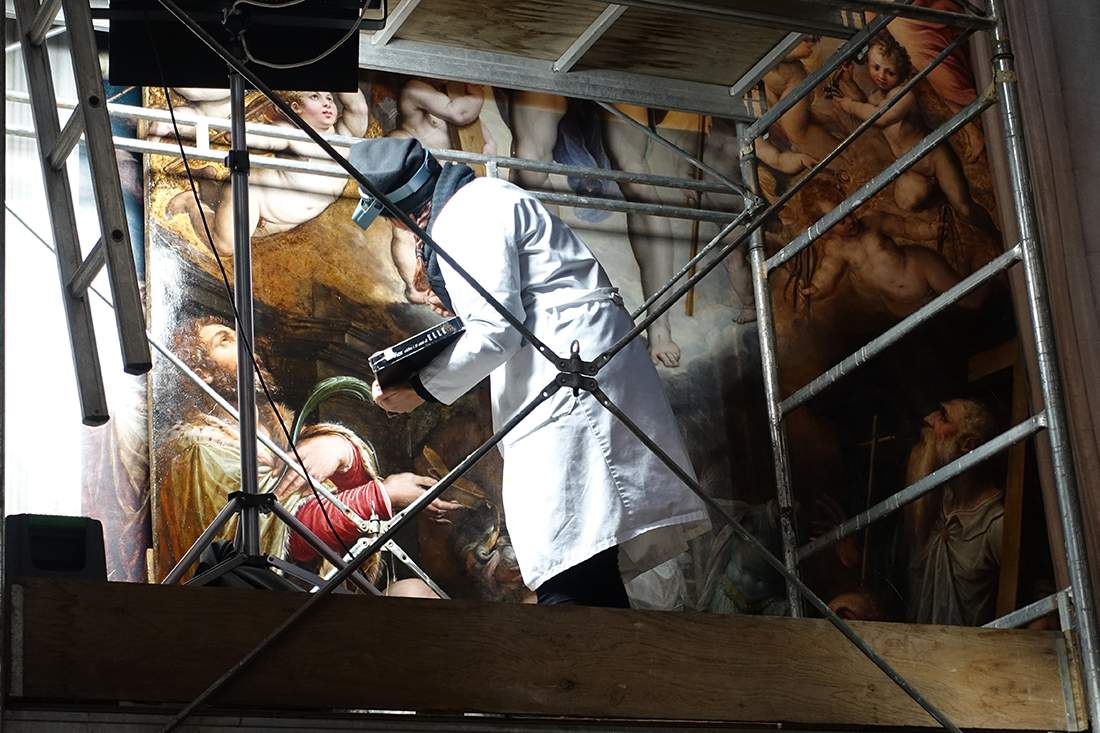Doubts on the part of scientific officers in the Ministry of Culture regarding the new competition for 518 officials, published last Nov. 8 in the Official Gazette. Indeed, among the figures listed in the notice, scientific officials are missing: the posts advertised are for 268 archivists, 130 library officials, 15 restorers, 32 architects, 35 art historians, 20 archaeologists, 8 paleontologists, and 10 demoethnoanthropologists. Lacking, for example, are physicists, chemists, and experts in cultural heritage diagnostics. Officials currently working at MiC therefore sent a note to the press to take a position on this lack.
“The MiC,” say the science officers, “announced on Nov. 8 a competition for 518 officer positions once again ignoring the positions for ’science officers.’ The competition procedures held since 1998 have left out some key professionals in the operation of the central institutes: the scientific staff, namely chemists, physicists, biologists, geologists, and diagnosticians. The scientific laboratories of these Research and Training Institutes, created in the first half of the last century, came into being with the founding of the Institutes themselves on the basis of a totally innovative idea: to build a scientific method of approaching conservation and restoration and to train future restorers through multidisciplinary input and a continuous exchange of knowledge, made possible by the coexistence of different professional figures working in the same workplace.”
“Since the founding of these Institutes,” the note continues, “chemists, physicists, biologists, geologists and, later, also diagnosticians have therefore worked closely with restorers, historians, archaeologists, architects, etc., dealing with the many conservation and restoration problems of our vast, complex and diverse cultural heritage, creating a ’historical memory’ and a valuable store of knowledge that must be protected and passed on to future generations. This ’historical memory’ and valuable store of shared knowledge is the lifeblood with which these three institutes have trained, and still train, future restorers. The Schools of Higher Education and Study, which grant a degree equivalent to the Master’s Degree in Conservation and Restoration of Cultural Heritage (LMR/02), are in fact a national and international reference for the multidisciplinary methodological approach described above. This approach sees art-historical subjects side by side with scientific subjects, restoration sites and laboratories side by side with science laboratory activities, classroom teaching side by side with field teaching.”
Officials emphasize that “now, as never before, the words of Cesare Brandi should be remembered, namely that restoration is the ’methodological moment of the recognition of the work of art in its physical consistency and in its dual historical and aesthetic instance in view of its transmission to the future’; therefore, it is the moment of knowledge, of historical, analytical, technical and constitutive research. Moment in which the work of art is known and ”recognized as such,“ with a view to preserving it for future generations and enhancing its value. The approach on which the words above are based, still relevant today, constitutes one of Italy’s most revolutionary historical pages, those of methodology and training on which the historic research institutes of the Ministry of Culture (MiC) are based and were created: the Central Institute for Restoration, the Opificio delle Pietre Dure and the Institute of Archival and Book Pathology, research and training institutes for restorers under Art. 29 of Legislative Decree 42/2004, the Cultural Heritage and Landscape Code.”
“The complete disappearance of these professional figures in the central Institutes, but also in the very few Superintendencies where they were present until a few years ago,” the MiC scientific officials conclude, “will result in the non-transfer and loss of the specific knowledge built up over the years thus determining a generational gap of professionalism, as well as the dismantling of these Institutes and, in fact, the abandonment of a cultural and methodological direction that has made the Italian approach to conservation and restoration an international reference for the protection of cultural heritage.”
 |
| Ministry competition, doubts of scientific officers: ignored our figures |
Warning: the translation into English of the original Italian article was created using automatic tools. We undertake to review all articles, but we do not guarantee the total absence of inaccuracies in the translation due to the program. You can find the original by clicking on the ITA button. If you find any mistake,please contact us.